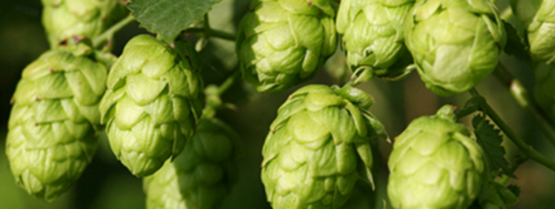When do I add hops to my beer wort?
It is dead easy to add hops
All you have to do is throw those precious green bullets of bliss into your drum once you have mixed all your ingredients together.
This is called dry hopping and it is easy as pitching yeast.
Many brewers add the hops a few days before bottling, once fermentation is complete.
Boom, you have done your beer a wonderful service by adding a magical green plant that will help give your beer a more discerning and bitter beer taste.
In this context, you are using hops for flavor and not so much for bittering purposes which happens during the boil.
There are some other methods that you might wish to try that will add character and flavor to your beer.
|
Method |
Why It’s Suitable for Adding Hops to Wort |
|
Dry Hopping |
Dry hopping is
particularly effective for enhancing the aromatic profile of the beer without
adding bitterness. By adding hops directly to the fermenter after all
ingredients are mixed, the volatile oils and aromas from the hops are infused
into the beer. This method is widely used in IPA brewing to heighten the hop
aroma, which is a signature characteristic of such styles. However, because
the hops are not boiled, there is no isomerization of alpha acids, so
bitterness does not increase. A downside is the potential increase in
sediment, which can be mitigated by careful pouring or filtration before
bottling. |
|
Hops in Muslin Bags |
Using hops enclosed in
muslin bags during fermentation is a tidy way to manage hop additions. This
method allows the hop flavors and aromas to permeate the beer while keeping
physical hop material contained, thus reducing sediment and making the beer
clearer. However, enclosing hops can slightly restrict their exposure to the
wort, potentially limiting the full transfer of flavors and oils. Despite
this, it’s a favored approach for maintaining clarity and ensuring that the
final product is free of floating debris. |
|
Hop Tea Technique |
The hop tea technique is
an advanced method that involves boiling hops in a muslin bag to extract both
the bitterness and aromatic oils efficiently before adding this concentrated
brew to the wort. This process allows for a controlled extraction of bitter
compounds and can be useful when a brewer wants to increase both the flavor
intensity and bitterness of the beer. Adding the tea and the bag into the
fermenter ensures that all the extracted hop qualities are utilized. This
method combines the benefits of boiling (for bitterness) and steeping (for
aroma), making it versatile for adjusting flavor and bitterness levels. |
From what I can figure out, the rationale is that the 'aromatic oils' that can be lost in the popular boiling process of beer are retained in the beer.
The dry hopping method does not add any bitterness to the beer itself. So if you're after a really bitter beer, you'll need a kit that has been designed with that in mind or you could try making a hops tea that removes the bitterness from the hops and then add the tea to your wort.
This method of adding hops to your beer will give your beer a nice hoppy aroma which will surely add to your drinking experience.
Dry hopping works fairly well with IPA style beers.
The negative of simply adding dry hops into your wort is that it does increase the likelihood of there being sediment in your beer but with a good pouring technique and refrigeration before said poor, you'll be OK.
To try and prevent that from occurring, you may wish to consider:
Placing hops in muslin bags to reduce sediment
The other method of adding hops to your fermenter is adding the hops secured inside in a muslin cloth bag.
We are not kidding.
If you wrap your hops up into a muslin cloth, the idea is that the sediment stays in the bag, but all the flavors get out and into your beer, meaning that you will have a clearer beer.
There are some arguments that this technique will actually hamper the effect of the hops as they kind of need 'room to breathe' and infuse the beer with their magical bitterness and IBU.
If you feel this is a fair point then I suggest you consider the:
The 'Hop Tea' technique to add bitterness to beer
That's right, before you make beer, you are going to make a cup of hop tea.
Put the hops in the muslin bag
This is normal.
During the boil, have a good smell and enjoy the aromas. That's the deliciousness you want to impart into your beer.
When you've boiled the hops for long enough, turn the pan off but leave everything right where it is.
At this time, you'll also have prepared you wort, so now put everything you've boiled - the whole muslin bag
The idea here is that the great hops aromas and oils have been removed from bullets and will mix easily with your brew. You're throwing in the muslin bag for good measure.
The bag itself will not have any effect on the beer or fermentation process, it can be disposed of on beer bottling day.

The key thing is to not overthink things. Sure you could use a hop chart and worry about boiling times but really, if you a starting out, just relax and read something from the Dune universe.
If you are using a starter kit
Using extra hops already shows you are ahead of the curve, just get them into the fermenter and sit back and wait for the hops magic to happen until you are ready to bottle your beer.
Now you've got a nice brew ready, sit back, grab a glass of healthy Kombucha and watch some Star Wars!



0 comments:
Post a Comment